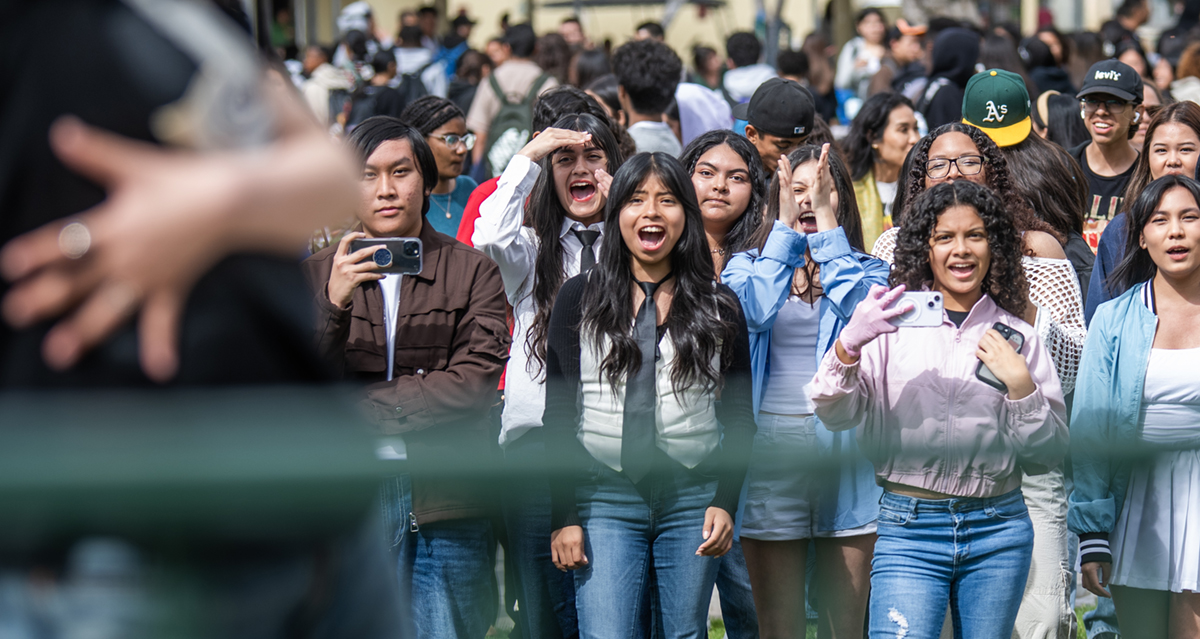The Long Beach Unified School District’s board of trustees on Wednesday adopted new restrictions on students cell phone use, and some campuses are already rolling out the rules.
The policy requires students in transitional kindergarten through eighth grade to power off and store phones and personal electronic devices in backpacks all day. High school students must do so during instructional periods. All grades are banned from using devices in restrooms or locker rooms or on field trips.
Some exceptions apply: Students may use devices in emergencies, when medically necessary, and when required by individualized education programs or 504 plans.
“We are reclaiming classroom focus, supporting mental health, and prioritizing the safety of every child in our care,” said Superintendent Jill Baker in a press release.
The policy will roll out districtwide in January, though schools can implement it sooner. Calls from teachers and parents, as well as mounting state pressure, prompted the Long Beach Unified School District to address the problem of phones in schools. The policy, which culminates months of research and feedback, aims to improve the classroom experience and align LBUSD with state law. Already, the district says it has received positive feedback.
Growing evidence shows that phones in schools fuel underperformance, anxiety, depression and bullying. Chris Itson, Program Administrator of LBUSD communications, spearheaded the policy after he noticed a “radical difference post-pandemic” in phone addiction and classroom distraction.
As phone use increased, so did demands for action. In August 2024, California State Superintendent Tony Thurmond called for districts to limit phones in schools. The next month, Gov. Gavin Newsom signed the Phone-Free School Act into law. This legislation requires school districts to implement policies limiting or prohibiting smartphones in schools by July 1, 2026.
Believing swifter action was needed, the LBUSD moved ahead of that deadline. “We would have loved to implement this years ago,” Itson said. “This is an issue we need to get a hold of as a society.” The district will offer guidance and resources to help schools implement the policy in the spring.
But many schools are ready now. Jordan and Cabrillo high schools are piloting the policy this semester. A handful of middle schools imposed phone restrictions last school year, as did some high school teachers, with success, according to Itson.
Franklin Middle School is in its second year of cell phone restrictions. Students understand the expectations and largely follow the rules, Principal Jorge Montanez said. “The policy has almost completely wiped out negative social media use, bullying, and fighting,” he said in a statement. “We’re able to better focus on instruction, creating a more welcoming and nurturing environment.”
Other California districts are passing similar restrictions. The Los Angeles Unified School District approved a “bell-to-bell” phone ban for all grades, stricter than LBUSD’s policy in high schools. Itson said students, teachers, principals and families involved in creating the LBUSD policy agreed a full ban in high schools would not be feasible to enforce.
While many other district policies focus only on phone restrictions, LBUSD’s policy addresses the interconnected issues of engagement, cyberbullying and social media safety and addresses them jointly, Itson said.
Itson and his team are planning a multifaceted communication campaign about the new rules. Community members can learn more about the policy through social media, presentations, videos, podcasts and informational town halls over the coming months.
The school board’s student member, McBride High School senior Chimnazaekpere Nwala, cast her advisory vote in favor of the restrictions. At the board meeting on Wednesday, she said her classmates were receptive to the policy. “I think it’s necessary and definitely well-received when explained to students,” she said.

